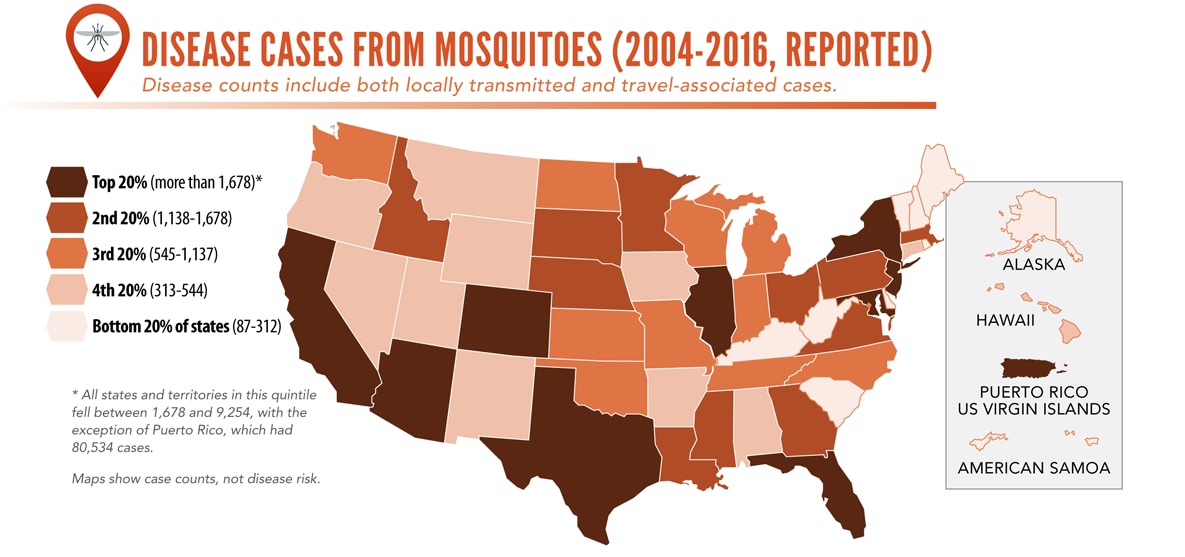Vector-borne Diseases
Research shows that over a dozen different diseases have been transmitted by mosquitoes. Some of the most common viruses are:
Aedes aegypti and Aedes albopictus mosquitoes are the primary vector-borne transmitters of this virus. The A.aegypti bites during the day while the A.albopictus is more prone to biting during dusk. The most common symptoms of chikungunya virus infection are fever and joint pain. Other symptoms may include headache, muscle pain, joint swelling, or rash. There is currently no vaccines for this virus.
For more information, follow this link to the CDC - https://www.cdc.gov/chikungunya/
Nearly 40% of the world’s population is at risk for dengue fever, which is spread by the Aedes aegypti mosquito. This disease is the leading cause of illness and death in the tropics and subtropical regions of the world. Dengue fever can have little to no symptoms associated with it, but common symptoms are: fever, headache, pain behind the eyes, joint and muscle pain. In the most severe cases, dengue fever can progress and lead to abnormal bleeding and low blood pressure. There are currently no vaccines for this virus.
For more information, follow this link to the CDC - http://www.cdc.gov/Dengue/
The culex mosquito is the main genus of the species responsible for transmitting the disease. WNV cycles between mosquitoes and birds. Humans do not develop high levels of the virus in their bloodstream and cannot pass the virus on to other biting mosquitoes. Most people infected with WNV will have no symptoms, but those that do usually report: fever, headache, body aches, joint pains, vomiting, diarrhea, or rash. There is currently no medication or vaccination for this virus.
For more information, follow this link to the CDC - http://www.cdc.gov/westnile/
The Zika Virus is carried and transmitted by the aedes aegypti mosquito. This mosquito is an aggressive mosquito that is active during the daytime. The virus causes birth defects and fetal abnormalities in pregnant women. While 80% of those infected by the virus show no symptoms, they include: slight fever, rash, headaches, joint and muscle pain. While uncommon, severe cases require hospitalization. There is currently no vaccines for this virus.
For more information, follow this link to the CDC - http://www.cdc.gov/zika/

Click on the map to explore epidemiological data the Dynamic Disease Map Viewer provided by the United States Geological Survey (USGS) and the Center for Disease Control (CDC)